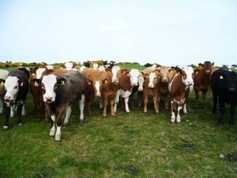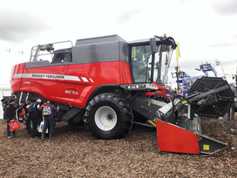The real benefit to the dairy farmer to getting rid of youngstock is that he can hold more cows on his farm and sell more milk.
The upside for the farmer rearing the heifers is that he doesn’t have to pay out to stock his farm and instead just incurs the normal input costs, such as fertilizer, meal, etc.
The cost of contract rearing depends on a number of factors. Some farmers let calves leave the dairy farm at two weeks old and, so, the contract rearer has a lot more work and cost rearing calves, rather than simply just grazing weaned calves. Some farmers will buy veterinary products and AI straws themselves rather than have the contract rearing farm buy these inputs. Some farmers will winter the heifers on the dairy farm. Every contract is specific to the two parties involved and what they agree.
If a contract rearing farmer takes in calves when they are weaned, he must graze them, winter them for at least the first winter and then graze them again in the second grazing season. Figure 1 shows the various phases of rearing and the accumulated cost assumption in each phase with the total variable costs of €565 per heifer just before the heifer returns to the dairy enterprise as an in-calf heifer about to calve down for the first time.
Now, there will be variations to these figures. If you can get weight gain from grass, you may not have to feed the amount of meal in the template. Depending on the vaccinations used in the herd, you may not have to incur all veterinary costs listed.
A contract rearing farmer will want to cover his costs of production and get some return on the labour and his assets (the land/buildings used for grazing). A dairy farmer will want to get his heifers reared correctly and up to target weights.
Instead of contract rearing, the other alternative for most dairy farmers is to rent a block of land away from the grazing platform and use this as the contract rearing farm and do the work themselves. This will be a cheaper alternative but you must do the work yourself and you may have to spend more money getting the block of land growing grass — fencing, water supply, phosphorus and potassium, etc. A short-term land rent can turn into a much bigger cost if you incur capital development costs and if you have to do a 20-mile round trip per day for herding, etc.
From talking to a number of farmers this week, the market price for contract rearing is between €1 and €1.20 per day for grazing animals, rising to between €1.40 and €1.60 per day for wintering in-calf animals in the second winter. If a heifer leaves the dairy farm weaned at 70 days old and returns just before she calves in January two years later she will be on the contract rearing farm for approximately 600 days.
If we assume 540 days at €1.10 and 60 days at €1.50, the cost to the dairy farmer is €684 per head. If he has sent 30 heifers each year, it means he will have an annual heifer contracting bill of over €20,500. The immediate reaction of the dairy farmer is: ‘‘I’d rent a fine farm and incur plenty of costs to meet this expense but is that correct?’’ A look at the production costs suggests there are very real costs with rearing youngstock that are hidden among the overall farm costs.
Remember, on many farms, the heifers get pushed to the corners of the farm where they end up underweight, late for breeding and the actual cost can be a lot more than actual production costs incurred.






 This is a subscriber-only article
This is a subscriber-only article











SHARING OPTIONS: